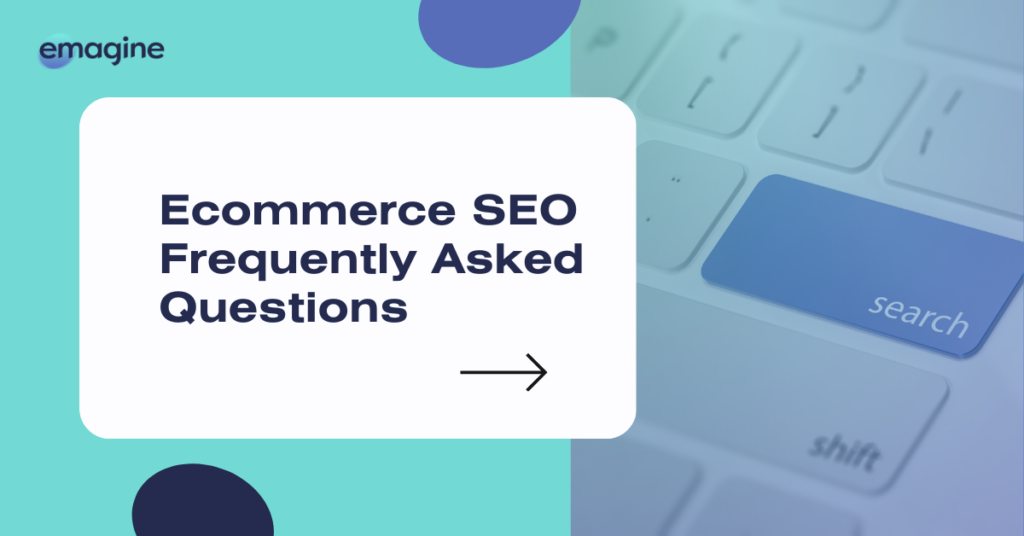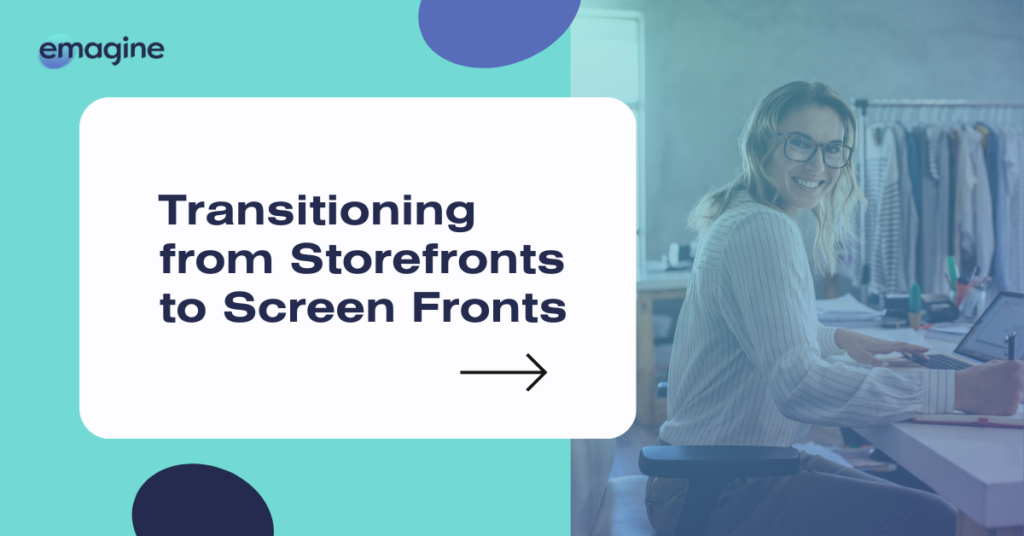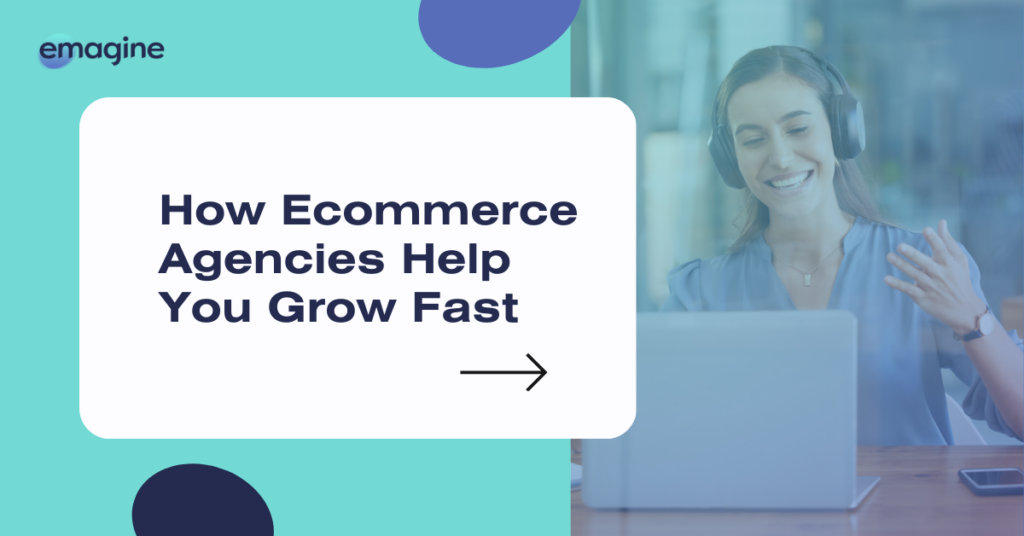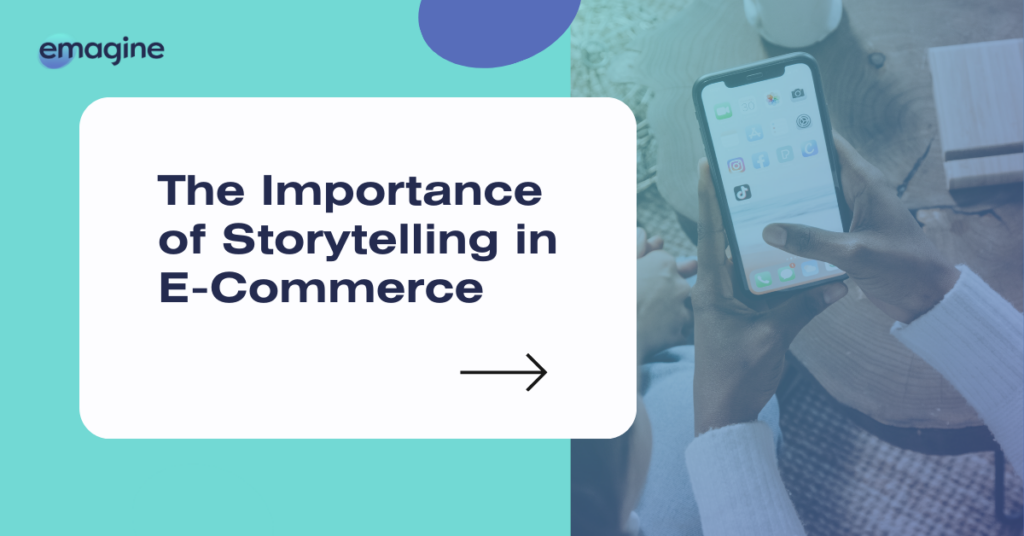Entering the e-commerce marketplace is an exciting venture for many entrepreneurs. The potential for success is vast, but so too, unfortunately, are the pitfalls. As a new online merchant, you may be eager to dive in headfirst, unaware of the common errors that could ultimately slow your progress.
This article aims to shed light on the top 10 mistakes that new e-commerce entrepreneurs frequently make. More importantly, it also provides actionable advice on how to prevent them, ensuring a smooth and successful journey for your business.
By being aware of these potential issues and having the proper guidance on your side, you can navigate through the e-commerce landscape with greater confidence and efficiency.
Misstep #1: Selecting the wrong ecommerce platform
Selecting the wrong e-commerce platform can be a costly mistake for new online entrepreneurs. It’s a foundational decision that impacts every aspect of your business operation.
The right platform should align with your business model and unique requirements, offering the flexibility and features necessary for your specific e-commerce needs.
It’s essential to understand that not all e-commerce platforms are created equal and they don’t cater to the same audience or serve the same purpose.
The key features to take into consideration when selecting your e-commerce platform are the following:
- Design flexibility & customization
- Available payment methods
- PCI-compliant hosting & platform maintenance
- Level of technical knowledge required
- User-friendliness
- Customer support options
Here’s a brief overview of the top e-commerce platforms in the market today and their optimal use cases:
- Shopify – One of the most popular choices due to its robust feature set and user-friendly interface. It is a great match for businesses of all sizes, offers a wide range of themes to start with, and allows for considerable customization. If you’re starting from scratch with no coding knowledge, Shopify is a strong contender.
- Magento – A feature-packed platform that’s best suited for medium to large businesses. Magento requires a higher degree of technical knowledge, but if your company has the resources for a dedicated IT team, it can provide a highly customizable solution.
- BigCommerce – An excellent choice for businesses looking to grow. BigCommerce offers built-in features such as SEO tools and an easy-to-use interface. However, it can be a bit pricey for smaller businesses.
- WooCommerce – The go-to solution if you’re already using a WordPress website. WooCommerce offers a powerful and customizable platform with a wide range of plugins. However, it requires a decent level of tech-savviness.
While each of these platforms has its strengths and weaknesses, for most businesses — especially those just starting, we tend to steer towards Shopify.
Shopify offers a balance of user-friendliness, customization, and scalability that we find most new e-commerce entrepreneurs need. It can cater to both a small startup and a blossoming enterprise, making it a versatile choice for your e-commerce journey.
Nonetheless, almost all e-commerce platforms provide a free demo or trial. It’s advisable to explore various platforms and experience them firsthand before settling on a specific one because selecting the incorrect one might affect your website’s functionality, user experience, and scalability.
Don’t miss out on the digital revolution!
Get insider tips and strategies on ecommerce, AI, and digital marketing – delivered weekly to your inbox.
Misstep #2: Underestimating the importance of good product photos and descriptions
A physical store allows customers to touch, feel, and examine products closely before making a purchase decision. In contrast, online shoppers have to rely solely on product photos and descriptions to assess the product’s quality, functionality, and suitability for their needs.
Outstanding product photos are crucial; they must be clear, in high resolution, and visually appealing — showcasing the product from multiple angles and in various contexts.
If possible, include photos showing the product in action to give customers a sense of how it works and feels.
Likewise, impressive product descriptions are vital. They should be informative, engaging, and persuasive — highlighting the product’s key features and benefits.
Remember that your product description is not just a list of features; it’s your sales pitch.
Below are some tips for you to create high-quality photos and engaging product descriptions:
- Comprehensive Product Visuals – Present your product from multiple angles to give customers a full visual understanding.
- Zoom Feature – Incorporate a zoom function to show intricate product details or material quality.
- Focus on Product Benefits – Highlight the emotional or practical benefits of the product, going beyond mere feature listing.
- Utilize Sensory Language – Use descriptive language that engages all five senses to help customers envision the product experience.
- Implement SEO Strategies – Integrate SEO-friendly keywords in your product descriptions to enhance discoverability on search engines.
- Integrate Product Videos – If possible, consider adding brief videos that demonstrate your product’s usage, spotlighting its unique attributes and functionality.
Misstep #3: Neglecting mobile optimization
With the ever-growing use of smartphones and mobile devices for online shopping, neglecting mobile users can prove disastrous for an e-commerce business.
Whether it’s a slow-loading website, poor user experience, or limited payment options, ignoring the importance of mobile optimization will undoubtedly drive customers away.
One common mistake new e-commerce entrepreneurs make is prioritizing the design of their website for desktop users, assuming that these shoppers will convert to customers regardless of how the website appears on mobile devices.
This misconception can be costly as around 70% of online shopping is happening on mobile devices.
Furthermore, search engines prioritize mobile-friendly websites in their results, penalizing those that are not optimized.
Here are some key considerations when creating a mobile-responsive design for your online store:
- Top-Notch User Experience – Online shopping is as much about the experience as it is about the product. A site that isn’t optimized for mobile can be hard to navigate, with misaligned text, images that don’t fit the screen, and buttons that are too small to tap. Such frustrations can quickly drive customers away, leading not only to lost sales but also to negative brand perceptions.
- SEO Benefits – Search engines, especially Google, prioritize mobile-responsive websites when determining rankings. If an e-commerce site is not mobile-friendly, it may get buried beneath competitors in search results, making it even harder for potential customers to discover the business.
- Faster Loading Times – Mobile-optimized websites typically load faster on mobile devices. Slow-loading sites can significantly discourage users, leading to high bounce rates. According to multiple studies, even a one-second delay in loading can result in substantial reductions in conversions since mobile users expect quick and seamless access to content.
Misstep #4: Neglecting customer service
In the highly competitive world of e-commerce, superior customer service can be a significant differentiator. However, new entrepreneurs often underestimate its importance, a misstep that can lead to customer dissatisfaction and damage the brand’s reputation.
A key component in fostering online trust is personalization. When a store assistant interacts with you directly, it signifies their genuine attention and the value of your business. Therefore, for your e-commerce business to stand out, it’s essential to emulate this sense of personalized care.
It’s important to note that customer service also extends to the post-purchase phase. Good return and refund policies, along with efficient handling of the same, can improve customer trust and loyalty towards your brand.
Here are some solutions you can integrate into your store to create a sense of personalized care:
- Live chat software – Live chat provides instant, real-time customer service, answering queries and resolving issues promptly. This on-demand support enhances customer satisfaction and fosters trust in your brand.
- Chatbots – Chatbots offer 24/7 automated support, handling routine queries efficiently. This allows for quicker response times and frees up your customer service team to tackle more complex issues.
- AI-driven software – AI e-commerce tools can automate and speed up tedious tasks, improve operational efficiency, and most importantly aid in providing personalized shopping experiences for your customers.
Misstep #5: Not utilizing social media effectively
The power of social media platforms in shaping consumer behavior and buying decisions is remarkable. However, many new e-commerce entrepreneurs do not leverage these platforms effectively, which can hinder their business growth and brand recognition.
An ill-planned or non-existent social media strategy can lead to missed opportunities to engage with potential customers, raise brand awareness, and promote products and services.
Here are some key strategies to effectively utilize social media for your e-commerce business:
- Choose the right platform for your brand – Understand where your target audience spends their time online and focus your resources on those platforms. This ensures your efforts are directed toward customers who are more likely to be interested in your products.
- Create engaging content – Concentrate on creating content that resonates with your audience and encourages interaction. This can be informative posts, behind-the-scenes sneak peeks, customer testimonials, or fun polls and quizzes.
- Stay consistent with your postings – Maintain a regular posting schedule, as inconsistency can make your brand seem unreliable or disinterested. A content calendar can be a useful tool to ensure regularity.
- Interact regularly with your audience – Engage with your audience by responding to comments, addressing queries and concerns, and appreciating positive feedback. This builds rapport and creates a community around your brand.
- Leverage User-Generated Content – User-generated content (UGC) is a powerful tool for building trust and authenticity. However, new e-commerce entrepreneurs often neglect to leverage this resource. Encouraging customers to share their product experiences and reviews on their social media profiles can boost brand credibility and broaden your reach.
- Run targeted ads – Utilize the powerful targeting options provided by social media platforms to reach potential customers based on their interests, location, and behavior. This increases the likelihood of conversions and helps in customer acquisition.
Misstep #6: Overlooking SEO and organic traffic
Ignoring the indispensable role of SEO and organic traffic can prove to be a costly misstep for new e-commerce entrepreneurs.
The importance of SEO lies in its capacity to drive organic traffic, enhance visibility, and boost conversions.
When you neglect SEO, you’re essentially creating obstacles for potential customers to find your online store in the vast digital marketplace.
Organic traffic, primarily driven by search engines, is not just a reliable but also a cost-effective method to attract customers. This unpaid traffic can significantly enhance your brand’s visibility and credibility, cementing your standing in the competitive e-commerce landscape. However, achieving a higher ranking on search engines like Google requires dedicated efforts to optimize your website for SEO.
Here are some key aspects to consider for your store’s search engine optimization:
- Keywords – These are the terms that potential customers use to search for your products or services. It’s crucial to incorporate relevant keywords in your content to improve your search engine ranking.
- Website speed – The quicker your website loads, the better the user experience. A slow website can lead to a higher bounce rate, impacting your SEO negatively.
- Website content – Quality content that provides value to the visitor can improve dwell time, increase inbound links, and boost your SEO. Always aim for original, informative, and engaging content.
- Mobile Optimization – A mobile-optimized website ranks better with search engines. It also provides a better user experience, which can lead to higher conversion rates.
Misstep #7: Overlooking the power of email marketing
Despite the proliferation of social media and other digital marketing platforms, email remains a profoundly effective tool for establishing direct and personalized communication with customers.
Neglecting email marketing can result in missed opportunities for promoting new products, offering special deals, or nurturing customer relationships.
Email allows you to deliver targeted messages directly to your customers. Furthermore, email campaigns allow businesses to keep their brand top of mind, encourage repeat purchases, and build a sense of loyalty among their customer base.
The following are the key elements to consider to create your effective email marketing strategies:
- Segmentation and Personalization – Segment your customer base to ensure the right message reaches the right audience. Personalize your emails based on customer preferences, purchasing history, and behavior to make them feel valued.
- Effective Subject Lines – The subject line is the first impression of your email. It should be compelling, concise, and accurately reflect the content of the email.
- Mobile-Friendly Design – With an increasing number of users accessing emails on their mobile devices, your email design should be responsive and look good on any screen size.
- Call-to-Action (CTA) – Every email should have a clear and prominent CTA guiding the recipient on the next steps. This could be visiting your website, buying a product, or learning more about a service.
- Analyzing Results – Regularly review your email marketing campaigns to understand what works and what doesn’t. This includes open rates, click-through rates, conversion rates, and unsubscribe rates.
Misstep #8: Complicated checkout process/No guest checkout
Forcing customers to go through a lengthy and complex checkout process may discourage them from finalizing their purchase, leading to higher cart abandonment rates, which in turn impacts your overall revenue and customer satisfaction.
Also, many customers prefer to complete their transactions quickly without creating an account or providing extensive personal information.
So, here are some key tips for you to have a smooth and efficient checkout process:
- Streamline the Checkout Steps – A simplified checkout process reduces frustration and minimizes the chance of cart abandonment. Limit the number of steps required to complete a purchase, only asking for essential information, and provide clear instructions at each stage to keep your customers engaged.
- Offer Multiple Payment Options – By providing a variety of payment methods, you cater to a wide range of customer preferences, thereby enhancing their shopping experience. This can include credit/debit card payments, digital wallets, and cash on delivery, among others, depending on your target market.
- Provide Guest Checkout Option – Not all customers want to spend time creating an account, especially if they are in a hurry or shopping with you for the first time. Offering a guest checkout option can speed up the process and increase the likelihood of purchase completion.
- Offer One-Click Sign-Ups Through Social Media or Gmail – This social sign-in alternative allows customers to register or sign in to your e-commerce store using their existing social media or Google accounts, eliminating the need for them to remember another username and password, thus speeding up the overall process.
Misstep #9: Lack of customer reviews
Not having enough customer reviews on your website can be a red flag for potential customers. It could make your business seem less credible. Therefore, it is crucial to encourage your customers to leave reviews after making a purchase.
Customer reviews serve as an authentic testimony about the quality of your product or service, giving potential customers the confidence to make a purchase. Based on a study conducted by BrightLocal, it was found that a staggering 88% of consumers place the same level of trust in online reviews as they do in personal recommendations. This statistic highlights the power of customer reviews in building trust and credibility for your e-commerce business.
Here’s how you can encourage more customer feedback in a simplified way:
- Send automated emails to request a review – This practice enables you to consistently reach out to customers post-purchase, subtly reminding them to share their experience and feedback, which can lead to an increase in the number of reviews you receive.
- Insert a note within the product packaging – A personal, handwritten note can create a connection with the customer, making them feel valued and more likely to take the time to leave a review about their purchasing experience and the product itself.
- Redirect your customers to a ‘thank you’ page post-purchase that prompts a review – This strategy takes advantage of the moment right after purchase when the customer satisfaction level is typically high, prompting them to share their positive experience and potentially influencing future customers. This approach is particularly beneficial for digital products or purchases that are fulfilled immediately.
Misstep #10: Limited shipping alternatives
Implementing limited shipping options can discourage potential customers, leading to abandoned carts and lost sales. This can be especially detrimental for businesses aiming to expand their customer base internationally, as shipping restrictions can rule out potential customers in different regions.
Providing customers with appropriate shipping rates and choices is pivotal for sustained retail success. As reported by Shippo, a shipping software company, over two-thirds of customers won’t purchase if free shipping is not offered.
Here are a few strategies to help broaden your shipping alternatives:
- Multiple Shipping Options – To cater to the diverse needs of your customers, consider offering multiple shipping methods, such as same-day delivery, standard delivery, and express delivery. This provides customers with the flexibility to choose an option that best aligns with their needs and expectations.
- Offer Free Shipping – If absorbing the shipping cost is not viable for your business, consider offering free shipping for orders above a certain threshold.
- Provide International Shipping – If your target audience is global, it’s crucial to offer international shipping. Make sure to provide a clear and detailed explanation of international shipping fees, taxes, and customs duties to avoid any surprises for the customer.
- Provide Trackable Shipping – Providing customers with the ability to track their orders enhances the transparency and trust in your service.
- Partner with Reliable Shipping Companies – Collaborating with reputable shipping companies ensures timely delivery and reduces the chances of order mishaps.
- Offer Returns – An easy and clear return policy can give customers the confidence to make a purchase, knowing they can return the product if it does not meet their expectations.
Conclusion
In the rapidly evolving world of e-commerce, stepping into the role of a new entrepreneur can be both exhilarating and challenging. While the digital marketplace offers boundless opportunities, it also presents pitfalls that can slow one’s progress.
From selecting the wrong e-commerce platform to overlooking the intricacies of shipping options, errors are bound to happen. However, by acknowledging these common missteps and actively striving to avoid them, you can establish a solid groundwork for success.
Keep in mind that there are dedicated e-commerce agencies, such as ours, that offer tailored guidance and support to assist you in overcoming these challenges and reaching your business objectives fast.
We recommend that you take this quick-fire E-commerce readiness quiz if you’re ready to launch or upgrade your e-commerce business.
You can also book a free one-on-one consultation with our team to discuss your business growth potential with e-commerce.







